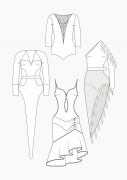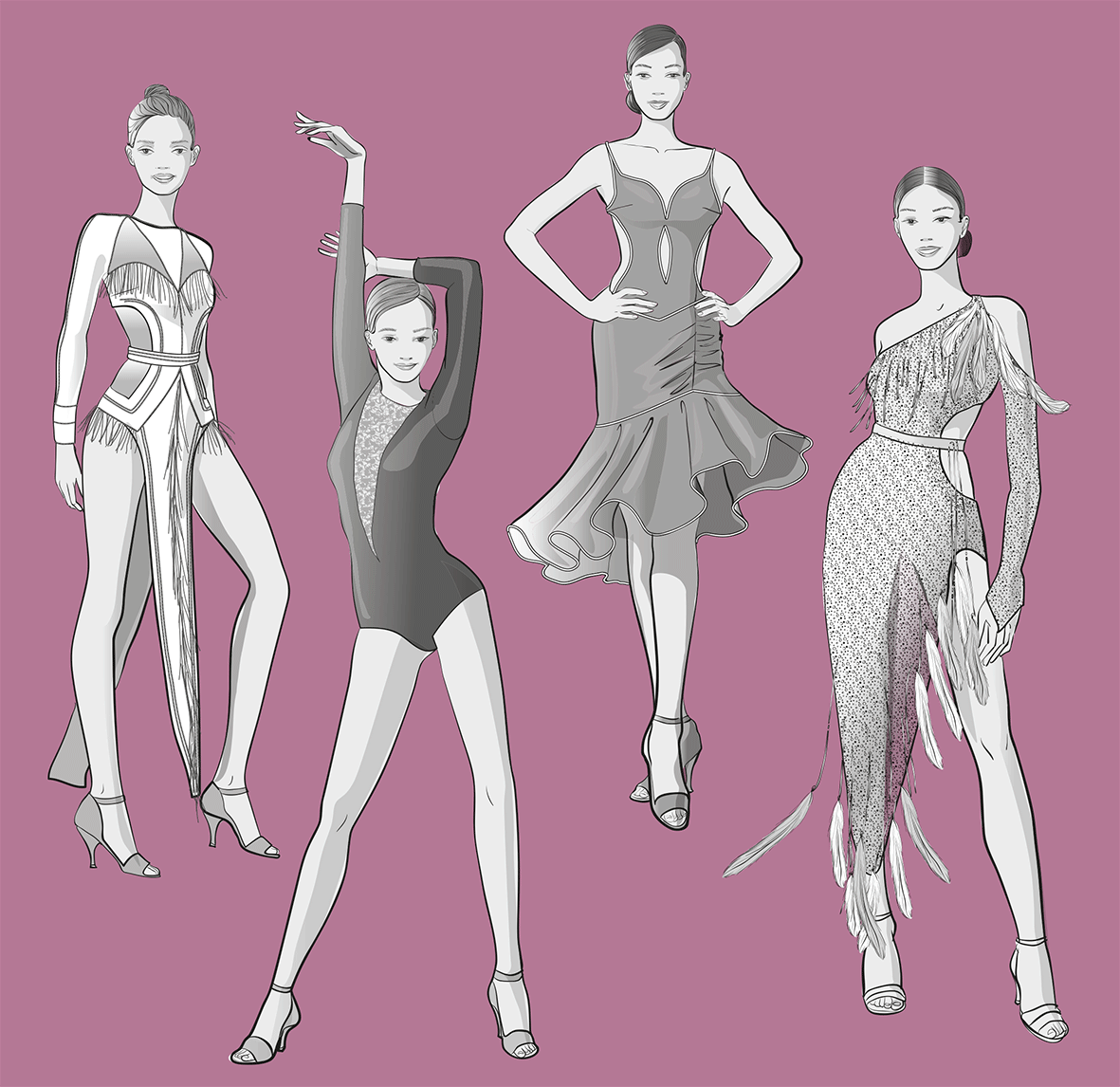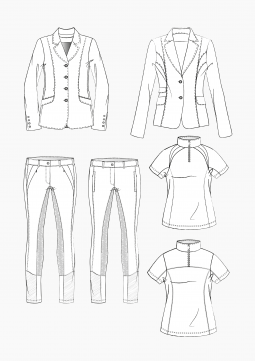The 1×1 of dancewear – The rules at a glance
Deutsch
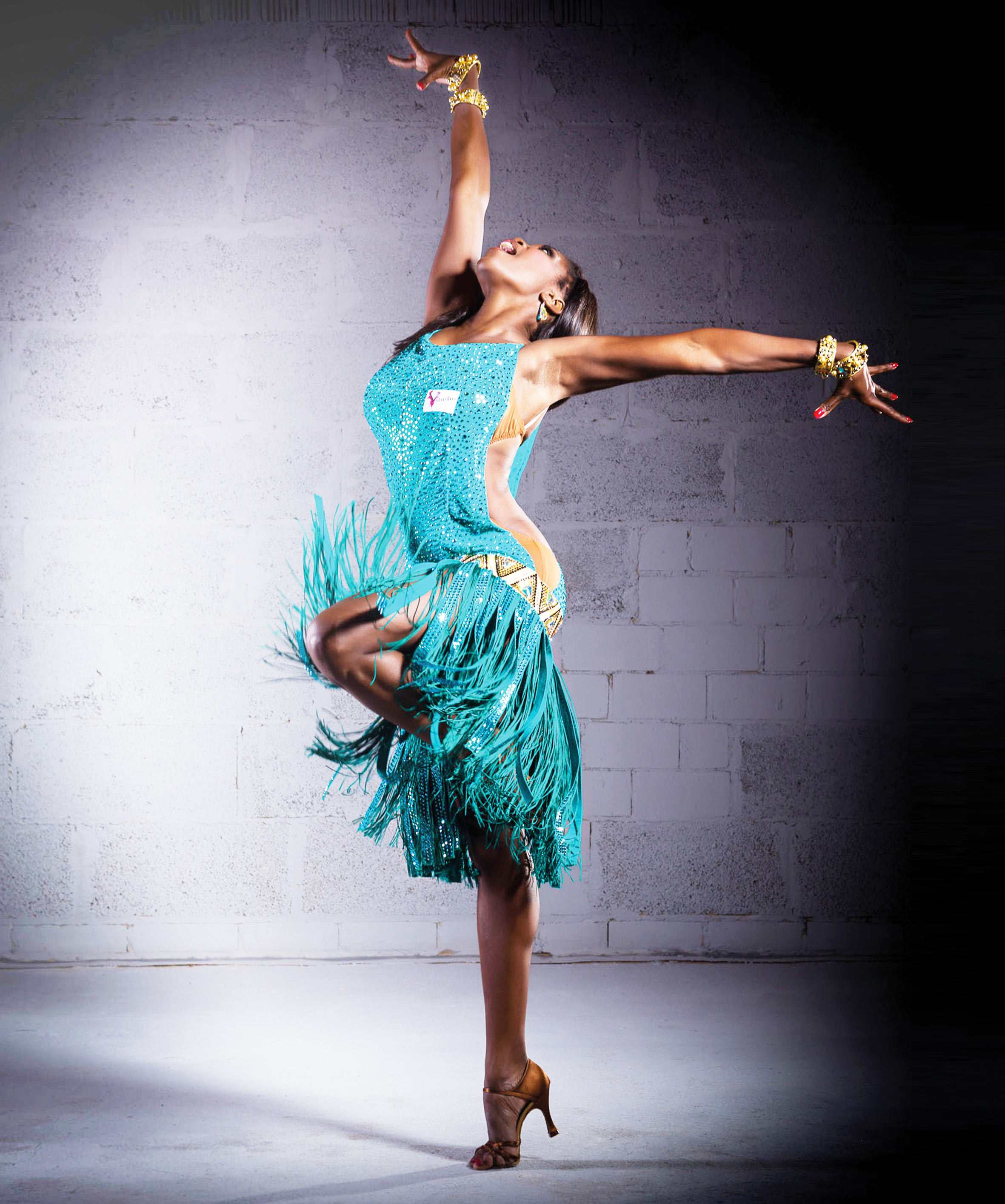
While we marvel at musicals or dance shows at the eye-catching costumes with numerous applications and accessories, professional tournament dancers have to submit to strict rules. Otherwise there is the threat of disqualification before the dancing couple could even enter the dance floor and shoot the first pirouette. Here you can find out which rules apply to professional dancewear and what you should pay attention to when designing it. This article is an excerpt from the Damen-Rundschau 10.2019. In this issue you will also find a portrait of dance fashion designer Olga Vasilkova and her label “V-Studio dance fashion” (in german laguage).
The rules for adult women in ballroom dancing are still quite manageable. It gets complicated with children and juniors, where for example cutouts and sleeve forms are bound to exact guidelines. The clear rules are, of course, justified by the fact that the dances of children and adolescents should not convey sexual stimuli. Thus only adult women are allowed to put on expressive make-up in order to strengthen their facial expressions during the dance and thus also the story they tell. In the following, the basic dressing rules for adult ladies in dance sports are summarized, which have been established beforehand by the German Dance Sports Association.
One-piece or two-piece dance outfit
To ensure that the jury does not miss a posture faults, the ladies’ clothing must always be close to the body. In wide trousers, for example, it would not be possible to tell whether the leg is completely stretched, and a loose fit top could conceal the lack of tension in the body. This is why dance sportswear is usually very close to the body and made of functional textiles that allow the dancer extreme flexibility. In standard dances, such as the Viennese Waltz, the woman has to wear a one-piece dress. For the Latin American dances, like Samba or Cha-Cha-Cha, she can also choose a two-piece dance dress. But beware: Not too much skin should be shown, because this can also lead to disqualification – at least if it is the wrong parts of the body.
The right panties for the dance dress
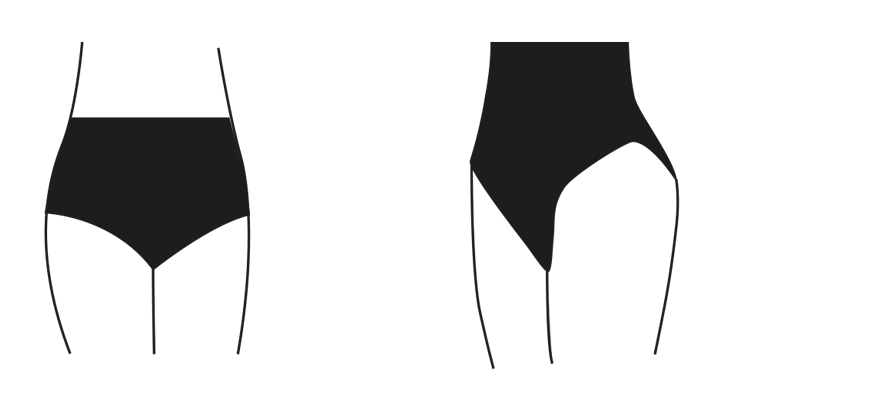
With one or the other dance figure the skirt can flutter up quickly. So that jury members are not influenced in their evaluation by this sight, strict rules apply to the panties of the ladies. So tangas are of course an absolute no go. The genital area must always be covered by a opaque fabric and neither the butt cheeks nor the buttock cleft must flash. The distance between the hip line and the panty line must be at least five centimetres to the side. However, because every woman has different body measurements, the respective tournament organizers can reserve the right to increase the minimum distance if too much skin is still visible. Usually the woman wears a skirt over her panties during the performance. In ballroom dance, the woman usually choose a long skirt or dress to take as much space as possible on the dance floor and to give the impression that the dancing couple is literally hovering over the floor. The end of the hem can be designed flexibly for adult women.
The top of the dance dress
While the ladies in entertainment TV shows like “Let’s Dance” are already swept across the dance floor in tight bikini tops, this would be a reason for disqualification at an official tournament event for professionals. Instead, the belly has to be completely covered with opaque fabric. The areas of the sleeves, shoulders, back and décolleté can be worked with transparent fabrics or even extravagant cut-outs. However, one important rule must be observed for the neckline: There may be a maximum distance of five centimetres between the bra cups. It is also important not to allow more visibility of skin when sewing transparent fabrics.
Colours and fabrics for dancewear
In dance sports, skin color is taboo. So neither panties, skirt nor dress may be worn in a skin-coloured tone without decoration. While children and juniors are not allowed to wear basic fabrics with a shining effect, adult dancers are allowed to wear them. This by no means fabrics in bright neons, but materials such as silk, satin, leather or sequin applications that reflect the light on the dance floor.
Accessories and shoes for dance wear
At tournaments, children must wear a block heel which must not exceed a height of 3.5 centimetres. Juniors may wear a heel of up to five centimetres, while in the adult category there are no restrictions on heel height or shapes. Children are not permitted to wear shoes made of a shiny, glittering base material. Only adults are allowed to wear rhinestones on eyelets, buckles and bridges. In the same way, fishnet tights may only be worn by adult ladies, whereas in younger age groups they must always be monochrome.
Formation: The Case of the 2015 World Cup
If several couples participate together in one formation in a tournament, all participants must look absolutely the same. At the 2015 World Cup, this rule almost meant the end of the song for the Latin formation from Bremen: the women of the formation wore green and red dresses. The choreographer in charge, Roberto Albanese, wanted to visually present the theme “West Side Story” and the two rival gangs, the jets and the sharks. As so often, the costumes were part of the story told by the dancers. The World Dance Sport Federation (WDSF) saw things differently and threatened to disqualify the team in the week of the World Championships if not all women performed in the same colour. This was followed by a big scandal, because the international rules only stated that the colours of the men’s costumes must not differ from each other. But discussing did not help. Instead, the tailor Sybille Becker created completely new models for the women of the formation within a few days. The effort paid off, as the team from Bremen won the 2015 World Championships. This example makes it clear that even experienced professionals can lose sight of the partly spongy set of rules. Olga Vasilkova has been creating the models for the Bremen team since this season. On the following pages she gives exclusive tips for the production of tournament clothing.
Pattern construction for dance dresses
In the e-Dossier Pattern Making Dance Dresses (Latin) you will find instructions on how to construct the pattern for four different dresses for Latin American dance (body, dress with cut-out, dress with pointed element, asymmetrical dress).
Pattern instructions and patterns for sewing sportswear can be found in our online shop.


